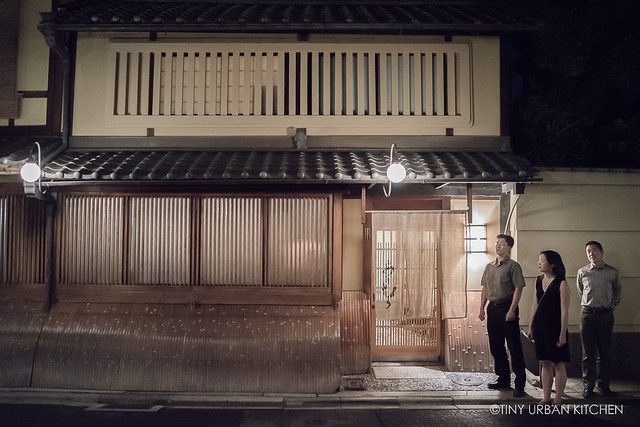
This is the tenth post in the Tokyo - Kyoto - Osaka series. Other posts in this series include the intro post: Tokyo, Kyoto, and Osaka, Matsugen (soba), Sushi Iwa, Ramen Honda (Tokyo Ramen Street), Ryugin, Omen (udon), Shouraian (tofu), Dotonbori in Osaka (street food), Taian (3-star Michelin), and Sushi Sho/Shou (Chef Keiji Nakazawa)
There are very, very few restaurants in the world where virtually every single course of a long tasting menu is outstanding. Most good restaurants will have a few dishes they do exceptionally well, and then some dishes that are good, but don't necessarily stand out.And then there are the jewels - the rare restaurant where every single course catches you by surprise. You are constantly and continually delighted by each course's complexity, thoughtfulness, and sheer extraordinary deliciousness (for lack of a better word) of the food. You are never bored.
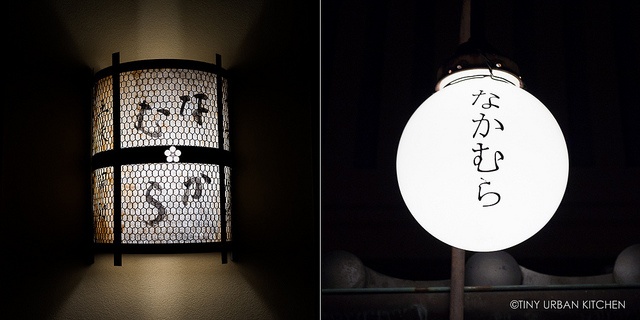
However, for just one night in Kyoto (Bryan's birthday), we got to experience a new level of Japanese haute cuisine - everything from the food to the service and the artistry - that took our breaths away. We had a traditional kaiseki in the heart of a city famous for this exact style of imperial, high-end, traditional Japanese multi-course dining.
What is Kaiseki?
Kaiseki meals typically involve the use of fresh, seasonal ingredients prepared in such a way as to emphasize their flavors. The entire experience is a big part of kaiseki cuisine, and therefore the ambiance of the surroundings as well as the artistic presentation of the food are all very, very important.
Kaiseki has been around for over 500 years, starting back in the 1600's when Sen no Rikyu, a tea master in Kyoto, felt that the powdered green tea used during tea ceremonies was too strong for an empty stomach, and needed some food to accompany it.
The original kaiseki meals consisted of just miso soup with three sides, but over the years they have evolved significantly, turning into one of Japan's most elaborate and high-end cuisines. Naturally, Kyoto is famous for its kaiseki cuisine, and houses some of the most famous restaurants.
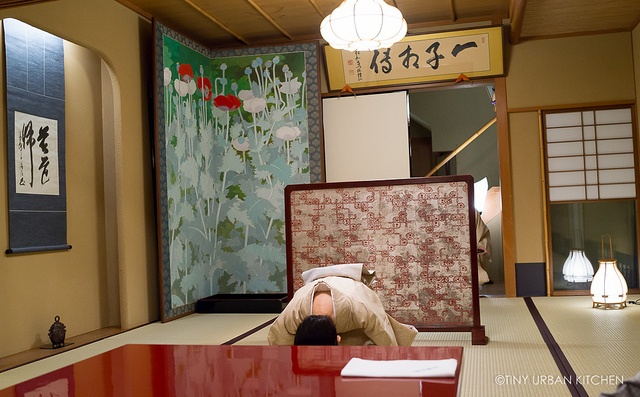
Service is a huge part of the kaiseki experience, and the service at Nakamura is unparalleled. We almost felt a bit embarrassed with the level of reverence we felt we received. For example, when we first arrived, four ladies dressed in traditional kimonos came in, one by one, bowing to us before serving us our first drink.
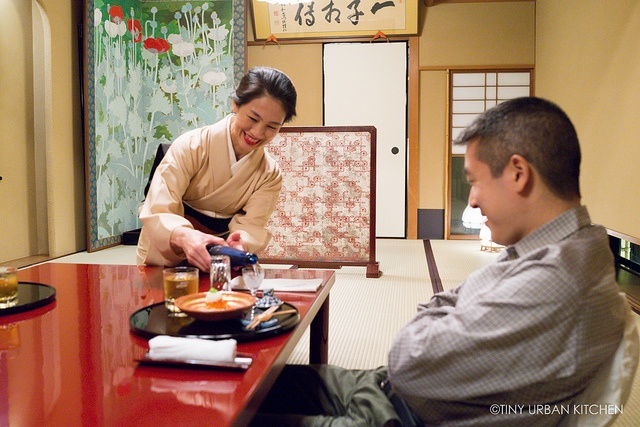
Each group gets its own private tatami room decorated with traditional Japanese art. Though a truly traditional tatami room involves sitting on the floor, these days many rooms (like this one), have spaces underneath the table for your feet, so you can sit a bit more comfortably.
There is no menu at a place like this. Essentially, the chef just cooks for you. They ask about dietary restrictions and drinks. Other than that, the entire evening is in their hands.
Once our servers gave us our first course, one lady stayed behind and knelt about 4 feet away from our table watching us eat.
We were a little confused, wondering if she would just be kneeling there the entire meal. As we took our first bites, we all said, "mmmm, very delicious." Once she was satisfied that we were happy with our food, she quietly stepped out. We breathed a sigh of relief, not sure what we would have done had she stayed and watched us eat the entire meal.
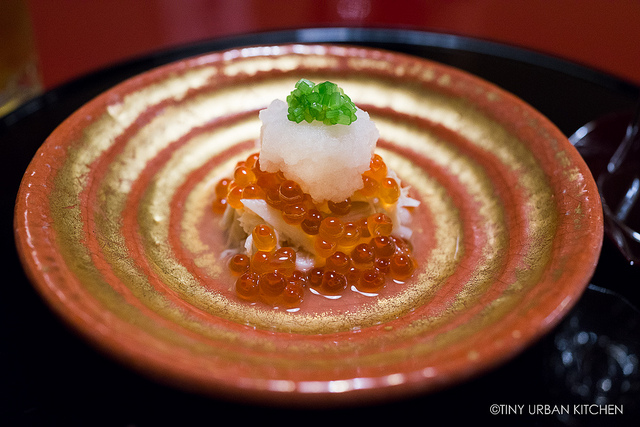
Our first course looked simple enough: a light bite that consisted of ikura (salmon roe) and fresh chunks of crab meat tossed together with possibly a bit of yamaimo (mountain yam). On top was a daikon puree and some spring onions. Despite the simplicity, the flavor combination was out of this world. The quality of each ingredient was top notch - the sweet crab meat, the rich juicy goodness inside the ikura, and the fragrant daikon came together beautifully.
Wow.
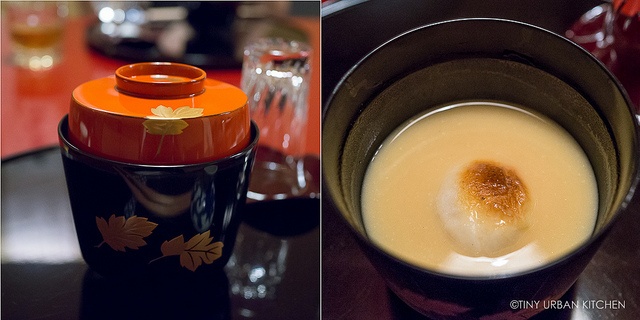
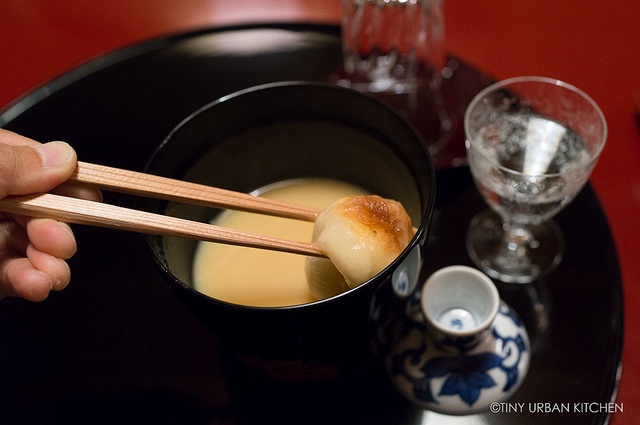
The second course, Shiromiso Zoni, is one of his signature dishes. It's an unusual miso soup that's actually made without any sort of stock. Most miso soups are made with some sort of bonito dashi based broth to add umami. Chef Nakamura's version depends solely on his extremely flavorful white miso and a sizeable portion of wasabi for flavor.
The resulting thick, creamy soup is intense, exploding with umami, and unlike any miso soup I've ever had. A large piece of pan seared mochi inside adds a lovely, chewy complement to the creamy soup.
It was simply amazing.
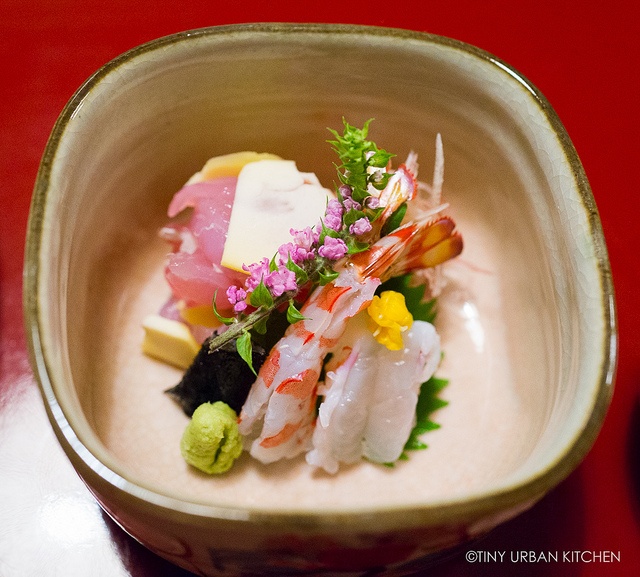
Our next course consisted of an artfully plated bowl of seasonal components, including kuri (chestnut), myoga (Japanese ginger), amadai (tilefish), ebi (shrimp), seaweed, and wasabi (mustard). All the components were extremely fresh and beautifully presented.
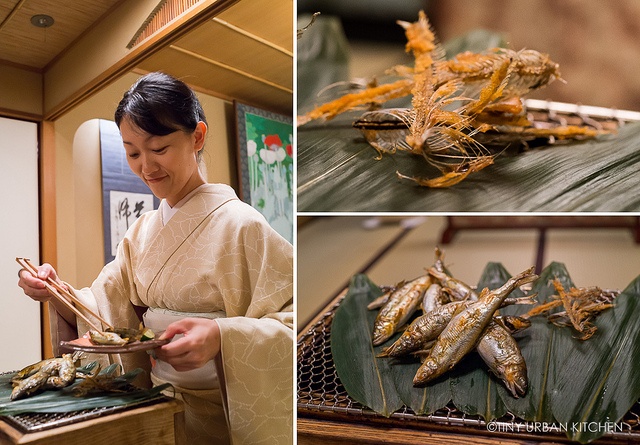
This next course, the Grilled Ayu Fish, appears to be a traditional dish that commonly appears at kaiseki meals. I had almost the same dish at Kikunoi Akasaka in Tokyo, the only other traditional kaiseki I've ever experienced.
Ayu, or sweetfish, is native to the rivers in Hokkaido as well as several other Asian countries. The ayu here, although it looks like a whole fish, has actually had its organs removed and instead is stuffed with more ayu eggs.
The bones are removed and deep fried into crispy snacks that can be eaten whole.
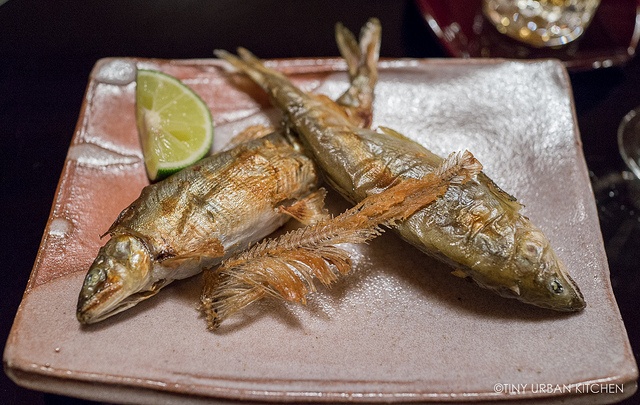
These fish can be eaten whole. The body portion is rich due to the unusually high egg content. The head is much crunchier and definitely not as rich. Frankly, I did not really enjoy the head very much. The taste was very bitter compared to the body. Furthermore, since I'm not used to eating heads normally, it was still a bit weird for me to bite into one. I ate one head, and after deciding I didn't love the flavor, left the other one behind.
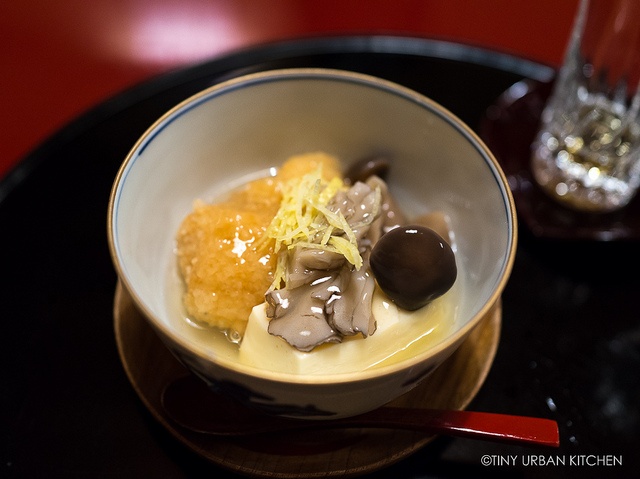
Our next course was a piece of eel (anago) fried in a traditional Japanese rice covering. This was accompanied by tamagodofu, an egg tofu custard, shimeji mushrooms, and yuzu essence. It was a lovely, harmonious blend of subtle yet balanced flavors.
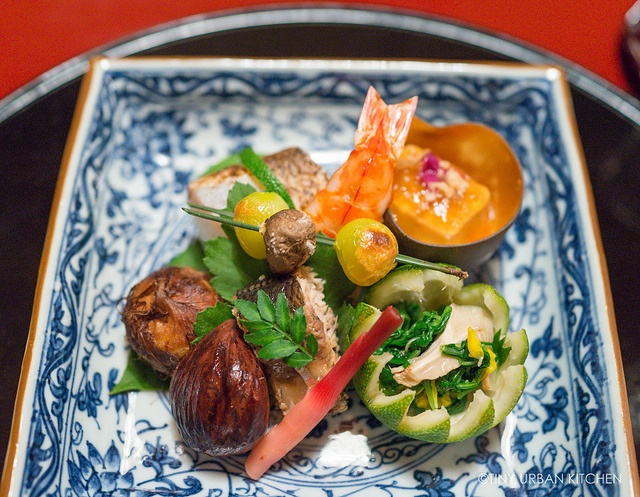
Kaiseki meals focus heavily on local, seasonal ingredients. It was October at the time, and thus autumn ingredients were heavily featured. In this next course, we had marron glacé (sugar glazed chestnuts), grilled anago (sea eel), grilled ginkgo nuts and these tiny potatoes (artfully skewered with a pine needle), a beautiful little salad of greens (in the lime), and pickled ginger.

I love gingko nuts, especially grilled. They are one of my favorite autumn items.
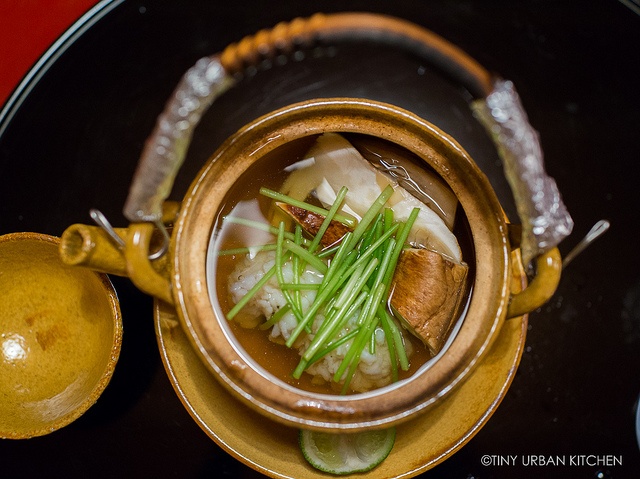
Our next course was another traditional kaiseki component: a gorgeously flavored consomme made from a rich assortment of components including matsutake mushrooms (another autumn specialty), kamasu (whiting fish), samma (mackerel pike), kurumi (walnut), crab, tofu, and greens.
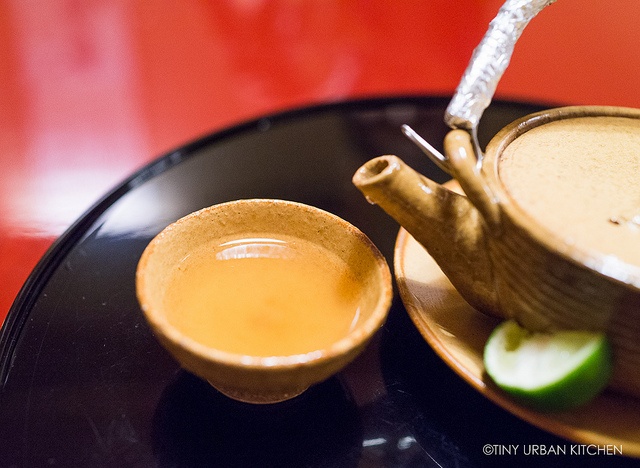
The resultant clear broth, which you drink like tea, is stunning. It's earthy from the fragrant matsutake mushrooms, richly flavorful from all the seafood that's inside, yet clean and restorative at the same time. A splash of lime perfects and brings together all these flavors.
It's the perfect cold weather broth.
I could drink this forever.
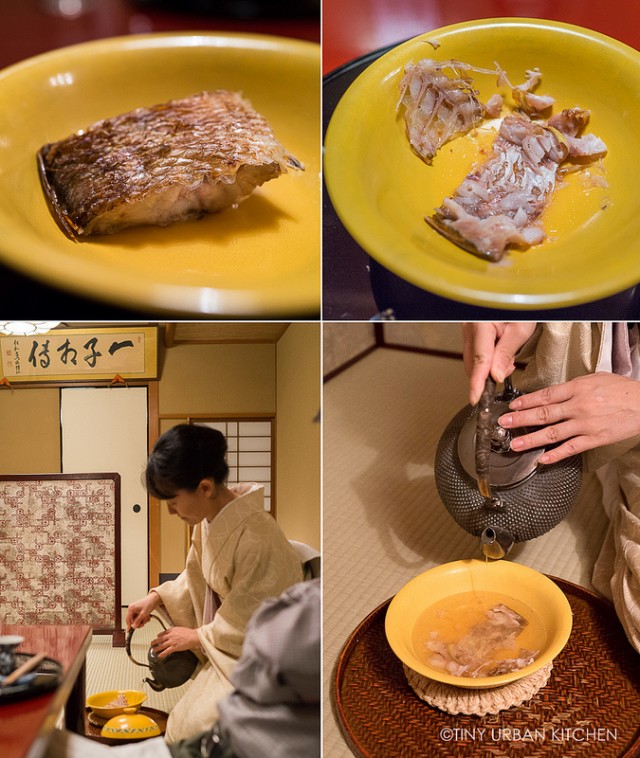
Our next course was another soup, this time one made from Grilled Tilefish. The presentation was interesting. First, they brought the grilled tilefish on its own. After we finished eating it (leaving the bones behind), the server came to each of our sides and poured hot, flavorful broth into our dishes.
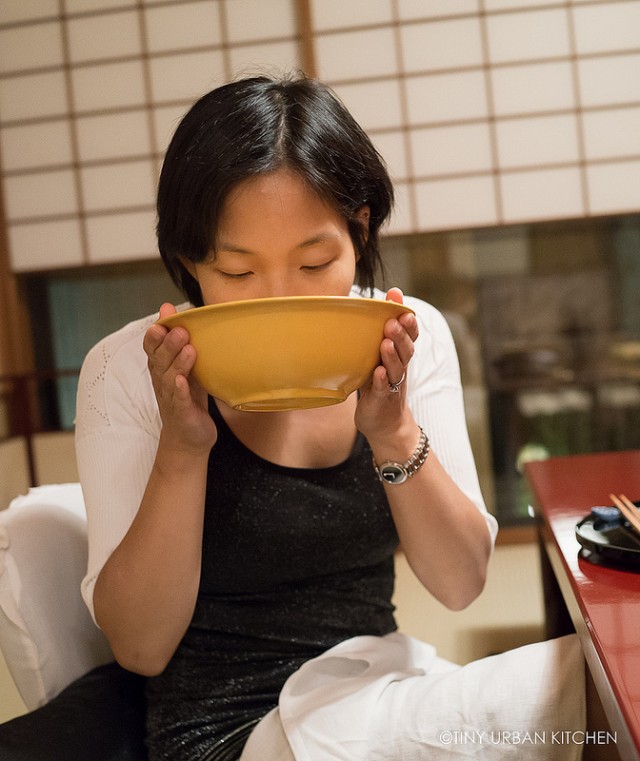
The broth was exquisitely flavored. I'm not sure our leftover bones contributed that much flavor at that moment to the delicious broth. However, it was an interesting touch and perhaps symbolized something I didn't quite understand.
I still happily drank the flavorful broth.
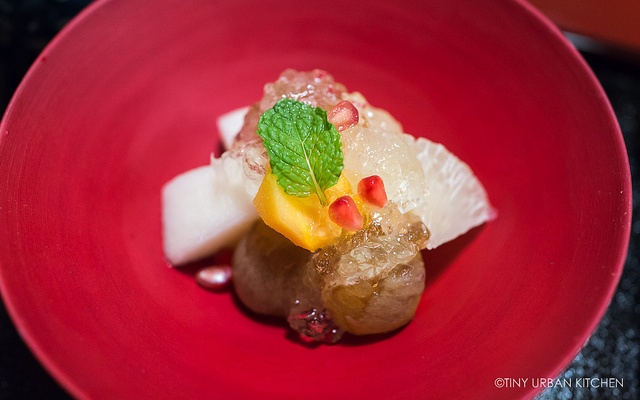
Although it had gone by quickly, several hours had actually passed by the time we got to dessert. We enjoyed a clean and refreshing dessert that included fresh pear (nashi), huge grapes, persimmons, grapefruit, and pomegranate seeds artfully plated (I can't really call this "tossed together") with a beautiful vanilla custard and jelly.
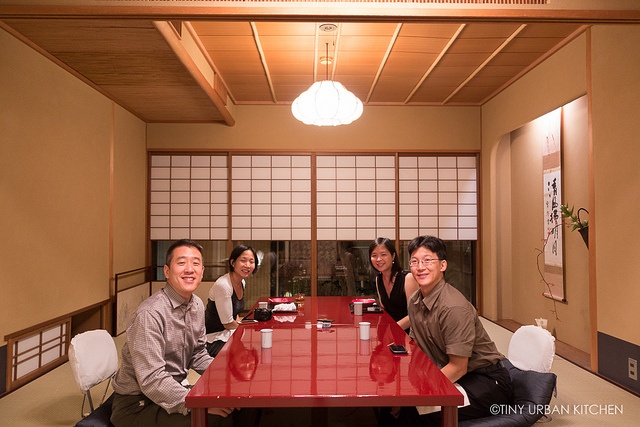
It had been an extraordinary meal and we really felt like kings, or at least Japanese imperial royalty. The beautiful space, the exquisite service, and the extraordinary food made this an experience we would soon not forget.
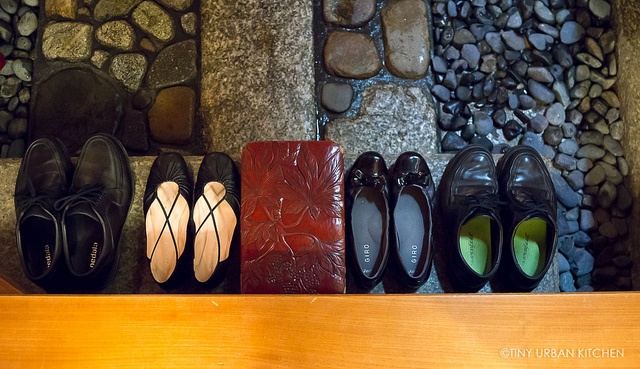
As we stepped out of our private tatami room back into the main hallway, we saw our shoes all neatly lined up for us.
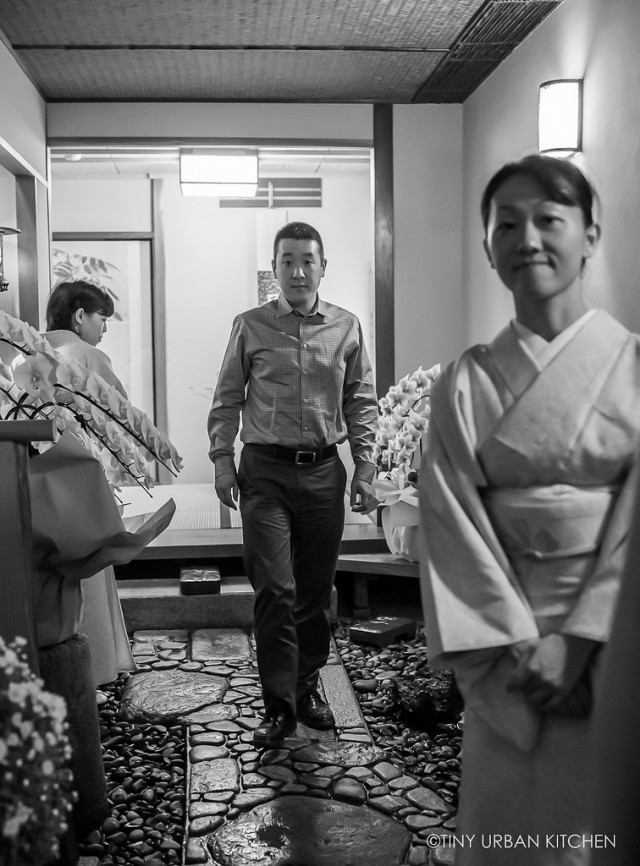
The staff carefully followed us out, bowing, smiling, and thanking us even as we drove off.
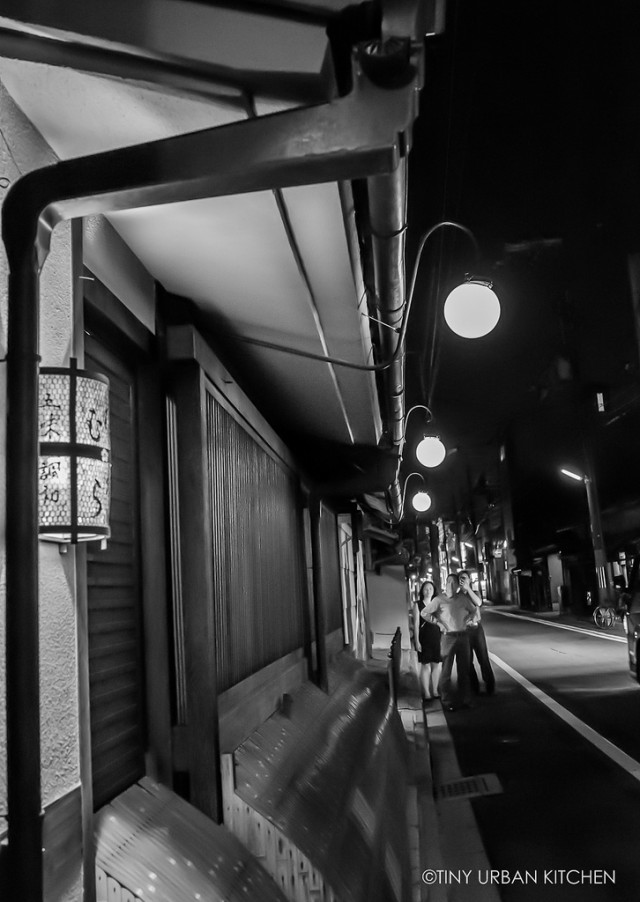
What a night to remember.
This restaurant truly deserves it's 3-Michelin star status. The entire staff goes above and beyond to make each diner's experience as special as possible. It's a great place to make someone feel really, really honored and treated like royalty. The place also feels special because of the sheer history behind the restaurant. Chef Motokazu Nakamura is a 6th generation chef in the family, carrying on a centuries-old family tradition and craft.
Reservations are a must. They are not usually open on Sundays unless if they have critical mass (at least six diners). Bryan's birthday was on a Sunday and I was having difficulty trying to book a special restaurant for him. I was thrilled when Nakamura decided he could open on Sunday in order to accommodate us. Considering the amount of staff needed to open, this was not a small feat.
This restaurant is very expensive. We only had one bottle of sake yet our total came to $365 per person. It was our most expensive meal in Japan. However, you do have to keep in mind how many people are being employed just to serve you this one meal. We had at least four servers plus probably an entire kitchen staff to pull off that meal.
All in all, it was definitely one of our most unusual, unique, and special meals in Kyoto. It was fascinating to get a glimpse of what a true kaiseki was all about, with all the bells and whistles. It's most certainly not the type of meal I would eat on any sort of regular basis. However, it was definitely worth trying once. The food was incredible and the experience definitely memorable.
All Rights Reserved

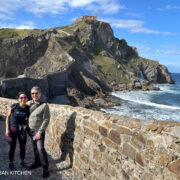
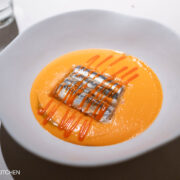
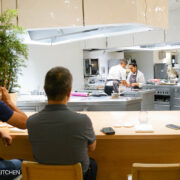
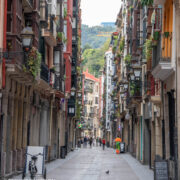
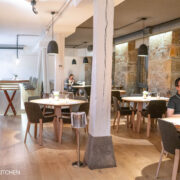
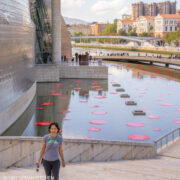
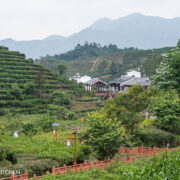
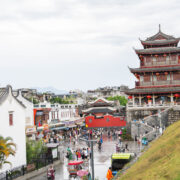
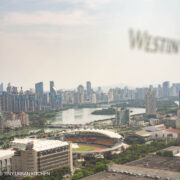
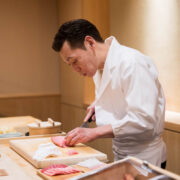
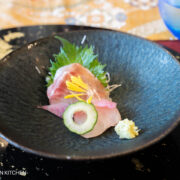
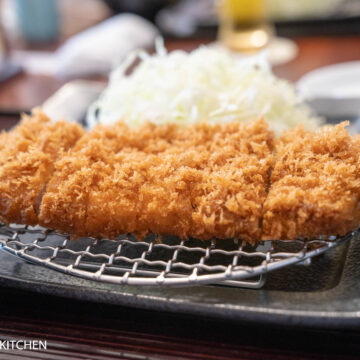
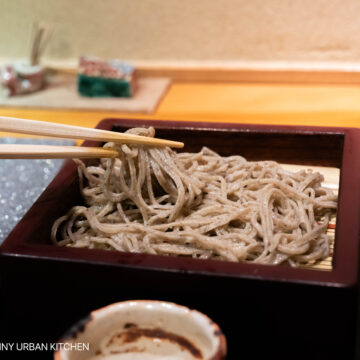
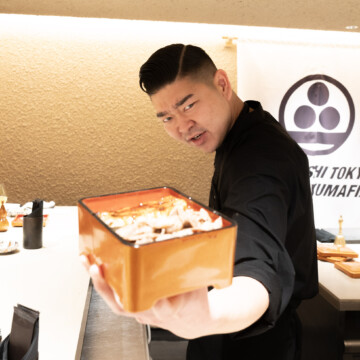
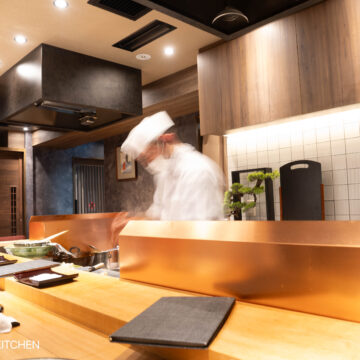
[…] Eats 1. Japan a course from Nakamura in […]